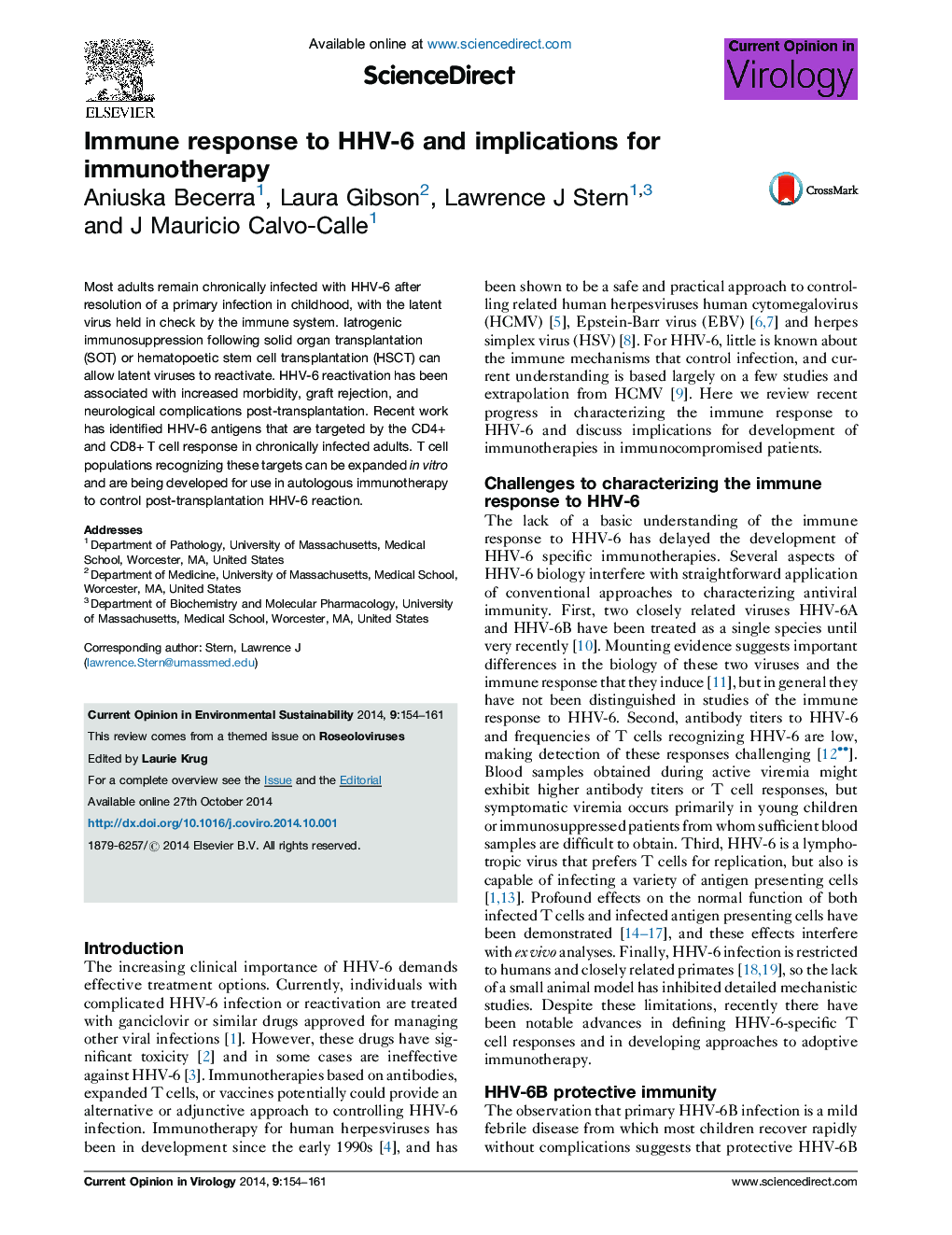| کد مقاله | کد نشریه | سال انتشار | مقاله انگلیسی | نسخه تمام متن |
|---|---|---|---|---|
| 2473340 | 1555917 | 2014 | 8 صفحه PDF | دانلود رایگان |

• Chronic HHV-6 infection is controlled by antibody and T cell immune responses.
• Post-transplantation immunosuppression allows HHV-6 reactivation and pathology.
• Targets of the immune response to chronic HHV-6 infection have been identified.
• CD4+ and CD8+ T cells recognizing HHV-6 antigens can be expanded ex vivo.
• Autologous T cell immunotherapy might prevent post-transplantation viral reactivation.
Most adults remain chronically infected with HHV-6 after resolution of a primary infection in childhood, with the latent virus held in check by the immune system. Iatrogenic immunosuppression following solid organ transplantation (SOT) or hematopoetic stem cell transplantation (HSCT) can allow latent viruses to reactivate. HHV-6 reactivation has been associated with increased morbidity, graft rejection, and neurological complications post-transplantation. Recent work has identified HHV-6 antigens that are targeted by the CD4+ and CD8+ T cell response in chronically infected adults. T cell populations recognizing these targets can be expanded in vitro and are being developed for use in autologous immunotherapy to control post-transplantation HHV-6 reaction.
Figure optionsDownload as PowerPoint slide
Journal: Current Opinion in Virology - Volume 9, December 2014, Pages 154–161